Ediacaran Fossils for Sale: Availability and Significance
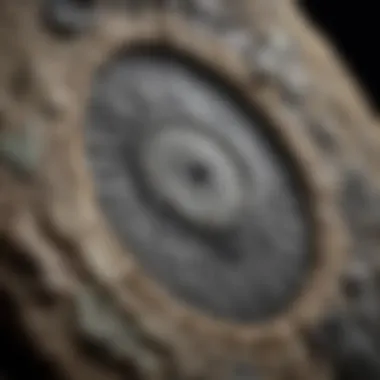
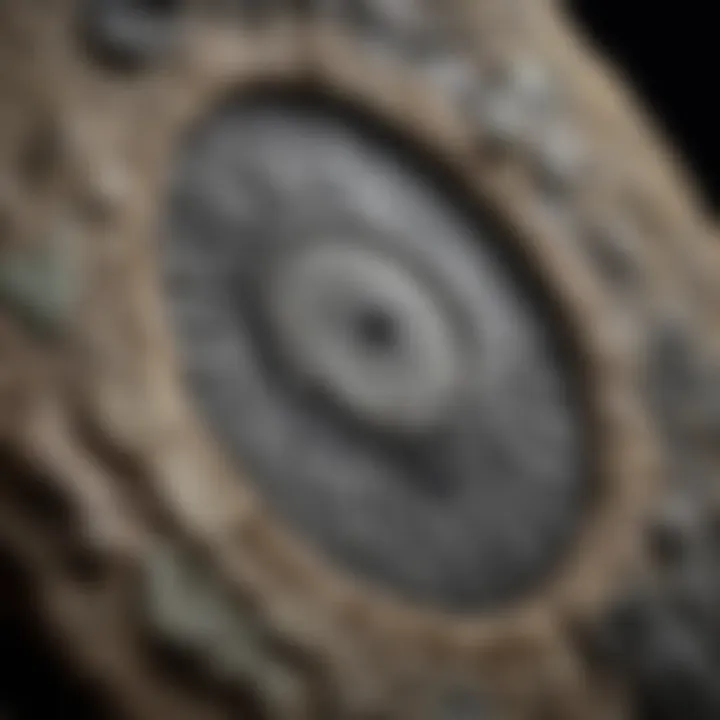
Intro
The exploration of Ediacaran fossils unveils a fascinating chapter in geological and biological history. These ancient remnants are not merely collectibles; they represent the emergence of complex lifeforms on Earth approximately 600 million years ago. As such, the market for these fossils has gained significant traction among collectors, researchers, and enthusiasts alike. Understanding the nuances of Ediacaran fossils involves delving into their historical context, identification, classification, and the ethical considerations surrounding their trade.
History and Origins
The Ediacaran Period, occurring just before the Cambrian Explosion, is critical for comprehending the evolution of multicellular organisms. Fossils from this time exhibit unique features that differentiate them from later life forms.
Overview of Collectibles, Rocks, and Fossils
Ediacaran fossils are collected not only for their aesthetic value but also for their scientific importance. Those who collect them appreciate the rarity and the connection to a transformative era in life’s history. Unlike ordinary rocks, these fossils provide evidence of the first complex ecosystems. They often feature distinct impressions or body fossils that reflect an entirely different approach to organism development compared to later periods.
Historical Significance and Cultural Impact
The discovery of Ediacaran fossils has profoundly influenced our understanding of early life. They have challenged previous notions about the timeline and complexity of life on our planet. For instance, specimens from the Ediacaran Period have been utilized to support theories of evolutionary biology. Furthermore, they serve as a reminder of the planet's biological heritage and the ongoing quest for knowledge about our evolutionary past.
Identification and Classification
Proper identification and classification are paramount for anyone interested in acquiring Ediacaran fossils. Recognizing the features that characterize these specimens can enhance appreciation and understanding of their significance.
Guide to Identifying Rocks and Fossils
Identifying Ediacaran fossils typically involves looking for specific characteristics. Some guidelines to consider include:
- Form and Shape: Many Ediacaran fossils present unique shapes that do not resemble any contemporary organisms.
- Texture: The surface texture can indicate the type of environmental conditions present when the organism was formed.
- Coloration: Ediacaran fossils may exhibit various colors due to mineral preservation, contributing to their uniqueness.
Common Types and Variations
Among the Ediacaran fossils, there are several notable types, including:
- Dickinsonia: Known for its distinctive oval shape and ribbed appearance.
- Charniodiscus: Often resembles a frond, showcasing a leaf-like morphology.
- Fractofusus: Characterized by its complex, fractal-like patterns.
Each of these fossils contributes differently to our understanding of Ediacaran biota. Collectors will find varying degrees of preservation, size, and rarity, which in turn affect their market value.
"Ediacaran fossils are not just objects of curiosity; they are keys to understanding early life on Earth."
Investing in Ediacaran fossils entails not only the joy of collection but also a sense of responsibility towards ethical practices in the fossil trade. The implications for both researchers and collectors are significant and merit careful consideration.
Prelude to Ediacaran Fossils
Ediacaran fossils are windows into a pivotal period in Earth's history, situated between simpler life forms and the abundance of more complex organisms. Understanding this segment enriches our comprehension of life's evolution and highlights the intricate tapestry of early biological development. This exploration serves to underline the significance of these fossils not only as academic artifacts but also as valuable collectibles. As enthusiasts delve into the realm of Ediacaran specimens, it is critical to approach their availability and significance with both excitement and discernment.
Defining the Ediacaran Period
The Ediacaran Period spans from approximately 635 to 541 million years ago, marking the last phase of the Neoproterozoic Era. It is significant because it witnessed the first widespread appearance of multicellular life. During this time, Earth underwent dramatic geological changes, including glaciations and shifts in sea levels. The Ediacaran biosphere was unique and different from both earlier life and what followed. Fossils from this period offer insights into organismal forms and interactions that contrast sharply with the Cambrian explosion that succeeded it.
Some key characteristics of this period include:
- The emergence of multicellularity.
- Organisms mainly living in marine environments, often attached to the seafloor.
- The appearance of unique body plans, some of which remain enigmatic.
This historic timeframe is distinguished not only by its biological traits but also by the evolutionary experiments it represents. The organisms that thrived during the Ediacaran are inferred to have played crucial roles in shaping subsequent ecological niches.
Overview of Ediacaran Organisms
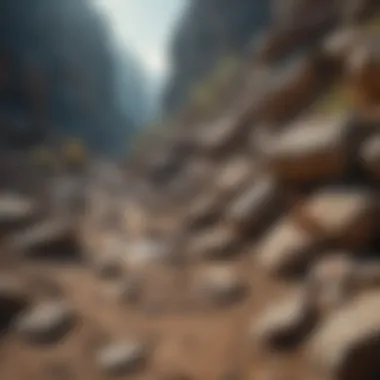

Ediacaran organisms present a fascinating array of forms believed to be among the earliest complex life on Earth. These organisms varied widely from simple frond-like structures to more complex, almost petal-like shapes, indicating diverse evolutionary strategies. Notable examples include Dickinsonia and Charnia, which showcase unique body plans and indicate advanced biological functions.
Research suggests that these organisms possibly utilized different methods of nourishment. Some may have been passive filter feeders, while others showed signs of more active feeding behaviors. Understanding the diversity of these life forms helps decipher the adaptations that set the foundation for future evolutionary bursts.
Key highlights of Ediacaran organisms:
- Unique morphology that challenges traditional classifications of life.
- Evident signs of early ecological interactions.
- Pioneering adaptations that prepared the way for more complex life forms.
This overview of Ediacaran organisms emphasizes their role in the ancient biosphere. Collecting such fossils can deepen appreciation for life's intricate evolutionary journey and prompt further inquiry into their significance in the context of larger paleontological studies.
The Significance of Ediacaran Fossils
Ediacaran fossils carry a weighty importance in understanding the origins of complex life on Earth. They capture a transformative period in geological history where multicellular organisms first appeared. These fossils are not just remnants of the past; they embody significant insights into evolutionary biology and paleontology. The study of these fossils helps scientists unravel the mysteries of how life evolved from simple cells to the diverse life forms we see today.
These fossils serve as a window into the earliest ecosystems, reflecting both environmental conditions and biological interactions.
Understanding Early Life Forms
The Ediacaran Period is notable for the emergence of diverse life forms. Unlike their predecessors, Ediacaran organisms exhibited complex structures and body plans. These life forms include a range of soft-bodied organisms, some resembling modern-day jellyfish and others with more unique forms, like Dickinsonia. Understanding these early life forms is crucial. It provides context for studying how these organisms adapted to their environments and collaborated or competed for resources. The fossil record from this period suggests a transition from unicellular to multicellular organisms, marking a pivotal moment in life’s history.
Impact on Paleontological Studies
Ediacaran fossils have revolutionized the field of paleontology. They encourage a reconsideration of the criteria by which we classify organisms. By emphasizing soft-bodied organisms, these fossils challenge the biases seen in traditional fossil records. Paleontologists can study how organisms interacted, adapted, and thrived, despite their lack of hard parts. This understanding shifts how the evolutionary tree is depicted. It invites researchers to rethink long-held assumptions about the progression of life.
- Ediacaran fossils have also prompted:
- New methodologies in fossil analysis.
- Revised timelines for the evolution of life.
- Broader discussions on the definitions of multicellularity.
Insights into Evolutionary Biology
Another significant aspect of Ediacaran fossils is their contribution to evolutionary biology. These fossils provide glimpses into the evolutionary processes at work during a crucial chapter of life’s development. They allow for the examination of evolutionary patterns and help scientists trace the lineage of modern life forms back to their ancient ancestors. The insights gained from Ediacaran fossils inform current theories on evolutionary transitions and diversity. Moreover, they set the stage for understanding subsequent periods, including the Cambrian explosion. Thus, Ediacaran fossils bridge a vital gap in our knowledge of the evolutionary narrative.
In summary, the significance of Ediacaran fossils extends beyond mere biological interest. They illuminate the early pathways of life, challenge existing frameworks within paleontology, and enrich our understanding of evolution itself. Engaging with these fossils opens up new avenues for research and appreciation of Earth’s complex biological history.
Market Trends for Ediacaran Fossils
Understanding market trends for Ediacaran fossils is crucial for both collectors and researchers. The Ediacaran period is known for its unique and ancient life forms. Fossils from this era often hold substantial scientific interest. This interest drives both market value and availability, impacting how these fossils are viewed by enthusiasts and scholars alike.
Understanding Fossil Valuation
Fossil valuation often hinges on rarity, condition, and scientific significance. Ediacaran fossils can be particularly valuable due to their age and the information they provide about early life forms. Factors influencing their price include:
- Rarity: Some Ediacaran fossils are much rarer than others. Unique specimens are often priced higher because they may not be easily available on the market.
- Condition: Well-preserved fossils command higher prices. Damage or incomplete specimens may not hold the same value.
- Scientific Value: Fossils that offer insights into evolutionary biology are deemed more valuable. Researchers might pay a premium for specimens that can aid scientific studies.
Where to Find Ediacaran Fossils for Sale
Finding Ediacaran fossils can be quite rewarding. There are multiple avenues available to collectors and researchers seeking these specimens. These include online auctions, specialty fossil dealers, and shows or conventions.
Online Auctions
Online auctions are a popular platform for buying Ediacaran fossils. These auctions provide a wide range of specimens from various sellers. One key characteristic is the competitive nature of bidding, which often leads to lower prices.
Though it can be beneficial to find interesting fossils, the auction process may pose some risks. Items could be misrepresented, leading to possible buyer regret. It is important to research the seller and read reviews to ensure a trustworthy transaction.
Specialty Fossil Dealers
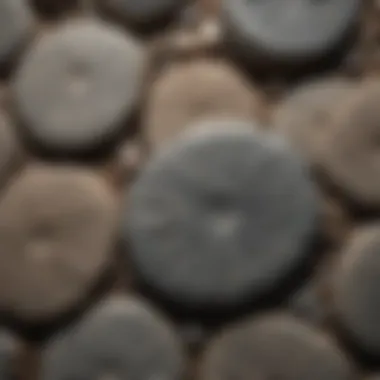

Specialty fossil dealers are another reliable source for Ediacaran fossils. These dealers often have expert knowledge and can provide context about the fossils they sell. Their specialization allows them to curate their collections with care.
The key characteristic of specialty dealers is the assurance of authenticity and quality. Buyers will often receive guarantees concerning the origin and condition of the fossils. However, prices through these dealers can be higher than other avenues, reflecting the expertise and reliability they offer.
Shows and Conventions
Shows and conventions present a unique opportunity to purchase Ediacaran fossils. They allow for face-to-face interactions with sellers, offering a chance to inspect items closely before buying. Attendees can discover a variety of fossils in one location, which promotes a richer buying experience.
A notable feature of shows is the community aspect. Collectors can share insights and knowledge. However, it can also be overwhelming due to the volume of options available. Prices may vary widely, and careful consideration of each specimen's value is essential.
"The fossil market can be influenced by trends and new discoveries, so staying informed is key for collectors."
Understanding where to find Ediacaran fossils for sale and how they are valued is essential for anyone interested in this fascinating segment of paleontology. Engaging in the market not only enriches a personal collection but also fosters contributions to the scientific community.
Ethical Considerations in Fossil Commerce
The market for fossils, including Ediacaran fossils, raises important ethical questions. These considerations revolve around sustainability, legality, and the integrity of paleontological research. As Ediacaran fossils become more desirable among collectors, the necessity of ethical practices in their commerce takes center stage. This section explores the ethical dimensions of fossil trading and emphasizes responsible collecting and compliance with laws relevant to paleontological finds.
Sustainable Collecting Practices
Sustainable collecting practices are essential to preserve fossil sites for future generations. When fossils are collected sustainably, it minimizes the impact on ecosystems and enhances opportunities for further scientific study. Here are key aspects of sustainable practices:
- Site Preservation: Keep in mind the surroundings of fossil sites. Avoid over-collecting in a single area to not disturb the ecological balance and geological context.
- Responsible Sourcing: Always verify that fossils come from reputable sources. Collecting without proper documentation can lead to loss of context, making the specimens less valuable scientifically.
- Ethical Trade: When buying or selling fossils, ensure that transactions encourage conservation efforts. Support dealers who advocate for sustainable practices. This can include contributions to research or preservation funds.
Adopting these principles not only helps to protect the integrity of fossil sites but also reflects well on collectors and dealers alike. Ethical transactions foster a positive reputation for fossil commerce, encouraging more collectors to take sustainable approaches.
Legal Issues in Fossil Trading
Legal considerations are also significant in the fossil trade. Every region has specific laws surrounding the collection, trade, and ownership of fossils. Ignoring these can have severe ramifications, including loss of specimens and legal penalties. Some common legal issues include:
- Ownership Rights: Understanding who has the right to collect fossils from certain locations is crucial. Many places consider fossils as property of the state or landowner, compelling collectors to obtain permissions or permits.
- International Trade Laws: When dealing with fossils from different countries, awareness of international laws is vital. Some countries have strict regulations concerning the export of fossils to prevent illegal trade.
- Documentation: Proper documentation is essential for legality. Fossils should come with provenance papers that trace their origin and confirm that they were collected lawfully. This not only protects the collector but also upholds the scientific value of the specimen.
"The ethical framework within which we operate affects not just the individual collector but the entire field of paleontology. Understanding these laws helps maintain the integrity of fossil collections and supports future research endeavors."
Identification of Ediacaran Fossils
Understanding how to identify Ediacaran fossils can enhance the appreciation of their significance. The ability to distinguish between authentic specimens and forgeries is critical for collectors and researchers alike. Ediacaran fossils provide insights into some of the earliest forms of multicellular life. Recognizing their unique characteristics is not just a matter of academic interest; it protects the integrity of fossil collections.
Key Characteristics to Look For
Identifying Ediacaran fossils requires attention to detail. Here are some key characteristics to consider:
- Morphology: Look for distinct body plans, which might include flat, discoidal shapes or softer-bodied forms. Ediacaran organisms often exhibit asymmetry and have varying textures.
- Preservation State: Check the fossil’s condition. Authentic Ediacaran fossils may show signs of preservation, often retaining impressions of organic material.
- Coloration: Naturally occurring variations in color due to the sediment can aid identification. Fossils might present hues like red, yellow, or brown.
- Stratigraphic Context: Knowing the geological formation is essential. Ediacaran fossils predominantly come from specific strata, such as those formed during the late Proterozoic era.
"Identification is a skill that combines scientific knowledge and an eye for detail; it is important in maintaining the authenticity of collections."
Resources for Identification
Several resources can assist in identifying Ediacaran fossils effectively. Consider the following:
- Field Guides: Books focusing on paleontology often include sections specifically for Ediacaran organisms. Some notable guides provide images, descriptions, and geographic context.
- Online Databases: Websites like Wikipedia (en.wikipedia.org) feature extensive details on Ediacaran fossils, with images and scientific classifications.
- Paleontological Societies: Joining organizations like the Paleontological Society can open access to seminars, workshops, and knowledgeable experts who can provide guidance.
- Fossil Identification Apps: Explore mobile applications tailored for fossil identification that can help confirm findings through image recognition.
- Community Forums: Engaging with communities on platforms like Reddit (reddit.com) can provide anecdotal insights and peer-reviewed advice on specific fossils.
By utilizing these resources and paying close attention to distinguishing features, collectors can enhance their skills in identifying Ediacaran fossils with confidence.
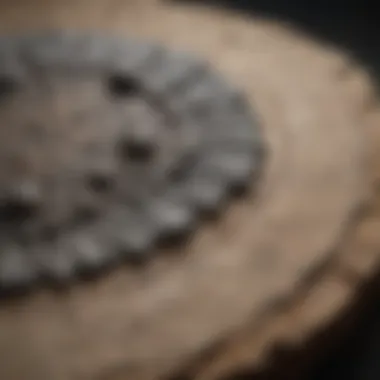
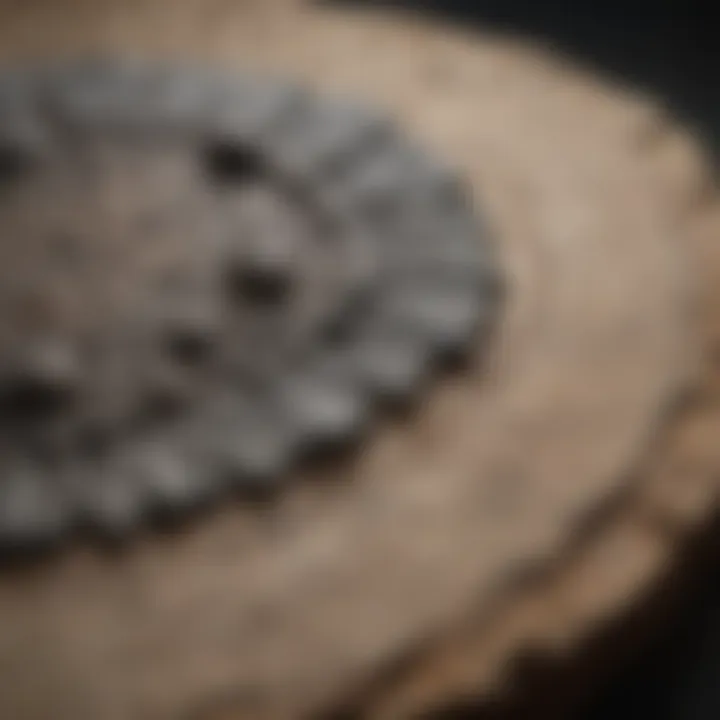
Caring for Ediacaran Fossils
Caring for Ediacaran fossils is an essential aspect for both collectors and researchers. The preservation of these unique specimens not only ensures their longevity but also maintains their scientific value. Fossils provide insights into ancient life forms and environments, and any damage or degradation can hinder this understanding. Proper care enhances their aesthetic appeal and market value, making it vital for collectors committed to preserving these treasures.
Proper Storage Techniques
The way Ediacaran fossils are stored can significantly affect their condition over time. Here are some key strategies for effective storage:
- Controlled Environment: Store fossils in a climate-controlled space. Temperature fluctuations and humidity can lead to cracks or other damage.
- Use of Acid-Free Materials: Insects, pests, and acids from non-archival boxes can deteriorate fossils. Use acid-free boxes or packets for long-term storage.
- Avoid Direct Sunlight: UV light can cause fading or color changes in fossils. Keep them in a dark area or use protective cases.
- Physical Supports: For larger specimens, consider using padded supports or display stands that reduce strain on structural integrity.
Implementing these techniques not only protects the fossils but also makes it easier to display them if desired.
Cleaning and Maintenance Tips
Maintaining the cleanliness of Ediacaran fossils is crucial. Regular cleaning can help preserve details that are integral to their scientific significance. Here are some practical tips:
- Gentle Cleaning: Use a soft brush to remove dust and debris. Avoid harsh chemicals that can damage fossil surfaces.
- Water Use: If fossils are particularly dirty, a damp cloth can be used, but ensure they dry properly afterward to avoid moisture buildup.
- Avoid Chemicals: Stay clear of solvents or cleaners that can alter the fossil. Mineral oil may be used sparingly for some specimens, but research your specific fossil type first.
- Handling: Use gloves when handling fossils to prevent oils from your skin from transferring and potentially harming the fossil's surface.
“Caring properly for fossils ensures that they not only retain their beauty but also contribute meaningfully to ongoing scientific research.”
Following these cleaning and maintenance tips effectively preserves Ediacaran fossils and ensures their availability for future generations. Educating oneself about care practices is as important as acquiring the fossils in the first place.
Future Prospects for Ediacaran Fossils
The continued interest in Ediacaran fossils highlights their importance not only to collectors but also to the scientific community. With each passing year, advancements in technology and research methods promise to deepen our understanding of these ancient organisms. By providing fresh insights into their morphology and ecology, we can appreciate the sophistication of early life forms and their place in the broader tapestry of evolutionary history.
Advancements in Technology and Research
Recent developments in imaging technology, like high-resolution scanning and 3D modeling, revolutionize the way paleontologists study fossils. These tools allow for detailed analysis without damaging the specimens.
New methods for chemical analysis can unveil the biochemical compositions of fossils, providing clues about their environmental conditions. These advancements enhance our comprehension of the Ediacaran organisms, adding layers of information previously unattainable. Moreover, computational biology integrates with fossil studies, enabling researchers to simulate Ediacaran ecosystems. This field shows promise for reconstructing potential interactions among species, thus presenting a richer framework for understanding these organisms.
Potential for New Discoveries
Ediacaran fossils still hold much potential for new findings. Many regions across the globe remain underexplored, leading to the possibility of uncovering previously unknown species. These discoveries could significantly alter our understanding of early life.
Both amateur and professional collectors can play a role in this exploration. As more fossils surface, they provide unique opportunities for advanced research and scientific analysis. Furthermore, citizen science initiatives are beginning to engage the public in fossil identification and collection, developing a collaborative approach to paleontological studies.
"The future of Ediacaran fossils is bright, with technology enabling breakthroughs that were once unimaginable."
As we look ahead, the significance of Ediacaran fossils intensifies. Their study is more than just a pursuit of knowledge; it could lead to practical applications in various scientific fields, enhancing our overall understanding of biological processes.
Epilogue
The exploration of Ediacaran fossils illustrates their significance not only in paleontology but also for collectors and researchers. As we have discussed, the Ediacaran Period represents a crucial epoch in the story of life on Earth. This time frame led to the emergence of complex organisms, which has profound implications for understanding evolution. Ediacaran fossils serve as tangible connections to these early life forms, making them invaluable for both scientific study and collection.
Reflecting on the Importance of Ediacaran Fossils
Ediacaran fossils hold significant importance for numerous reasons.
First, they offer insight into early multicellular life. The structure and composition of these fossils help scientists unravel the complexities of biological evolution. These organisms were among the first to develop complex bodies, setting the stage for future life forms.
Second, the study of these fossils impacts ongoing paleontological research. They provoke questions about how life began its intricate journey on Earth. By examining Ediacaran specimens, researchers can better understand the environmental conditions that led to such changes.
Third, they enrich the collecting field. For enthusiasts, owning a piece of this ancient world brings both joy and educational value. Being aware of their significance enhances the experience of collecting Ediacaran fossils.
In engaging with Ediacaran fossils, one must reflect on ethical considerations too. The balance between appreciation for these specimens and responsible practices is vital. Collectors must be informed about sustainable gathering and legalities surrounding fossil trade.
In summary, Ediacaran fossils are not only remnants of our planet's distant past; they are vital to our understanding of life's history and the evolution of organisms. Engaging with these fossils, whether through study or collection, offers a pathway to appreciating the intricate web of life that has developed over millions of years.
Ediacaran fossils provide a unique window into the past, helping us understand the origins and complexity of life itself.



